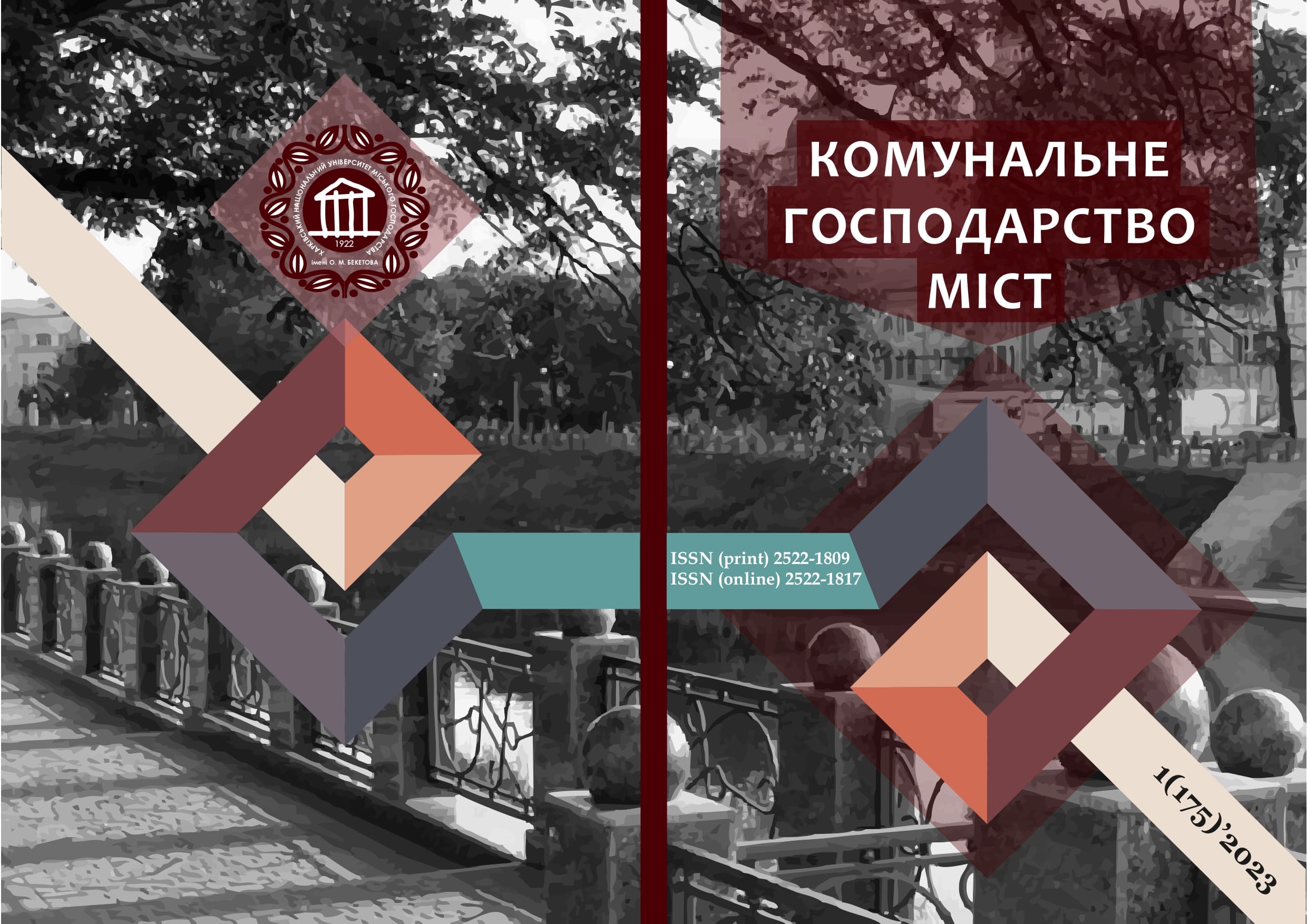SCIENTIFIC AND PRACTICAL APPROACHES TO THE DETERMINATION OF SPATIAL PROVISION OF ENVIRONMENTAL MONITORING OF LAND USE IN THE URBAN ENVIRONMENT
DOI:
https://doi.org/10.33042/2522-1809-2023-1-175-81-87Keywords:
spatial support, environmental monitoring, geoinformation system, land plot, land management, cadastral data, land use, information support, automationAbstract
The current state of spatial provision of ecological monitoring of land use in the urban environment is characterized by ambiguous theoretical and practical approaches, which are determined by regulatory rules and quantitative indicators. There are several problems that affect the spatial provision of ecological monitoring of land use in the urban environment.
Stakeholder relations for the formation of strategic contours of environmental policy: are formed and implemented by:
- implementation of education in the interests of balanced (sustainable) development, environmental education and upbringing, educational activities with the aim of forming environmental values in society and increasing its environmental awareness;
- assessment of the attitude and raising the level of public awareness regarding the importance, benefits and tools of sustainable consumption and production, the state and values of biodiversity and the measures that must be taken for its preservation, restoration and sustainable use;
- ensuring the practical implementation of the results of modern and fundamental ecological research and continuous interaction between scientists and state bodies; taking into account the recommendations of environmental scientific institutions when making management decisions and preparing drafts of normative legal acts;
- development of partnership between sectors of society in order to involve all interested parties in the planning and implementation of environmental policy; ensuring public participation in management decision-making in the field of environmental protection and nature management;
- ensuring compliance with the environmental rights and responsibilities of citizens, public access to justice in matters of environmental protection and nature use.
The purpose of the article is to research modern approaches to determining the spatial provision of ecological monitoring of land use in the urban environment. As a result of the research, the proposed author's definition of spatial provision of ecological monitoring of land use in the urban environment as a system of formation and use of information provision and control over the use of information on the ecological state of land use in the urban environment with the use of modern technological means and geo-information systems, taking into account the peculiarities and directions of interaction with various by groups of interested persons (stakeholders), including state and local institutions, aimed at increasing the efficiency of land use and environmental safety.
Special attention is paid to the study of the impact of ecological components on individual land plots, the peculiarities of their registration, the creation of land management documentation and the accumulation of cadastral information during the implementation of monitoring processes.
Research has a significant place in the development of urban land use monitoring and the sustainable development of cities in general.
References
Zemelnyi kodeks Ukrainy vid 25.10.2001 r. No 2768- III. (2002). Verkhovna Rada Ukrainy. Vidomosti Verkhovnoi Rady Ukrainy, 3–4,27. [in Ukrainian]
Petrakovska O., Lizunova A. (2009). Urban planning in private property conditions in Ukraine. International Academic Group On Planning, Law And Property Rights. Third Conference. Aalborg, Denmark.
Tsyvilnyi Kodeks Ukrainy (2003). Vidomosti Verkhovnoi Rady Ukrainy, 40–44, 356. Retrieved from: https://zakon.rada.gov.ua/laws/show/435-15#Text [in Ukrainian]
Mamonov, K. A., Nesterenko, S. G., Vyatkin, K. I. (2016). GIS-ensure rational use of land resources for urban development. Scientific Bulletin of construction. Kharkiv national University of construction and architecture. Kharkov, 86 (4), 323.
Hubar, Y. (2012). Development of approaches and methods of cadastral assessment of real estate in settlements. Modern achievements of geodetic science and production, II (24), 146–150.
Larsson, G. (1991). Land registration and Cadastral Systems: tools for land information and management. Esex: Longman Scientific and Technical, 387.
Nesterenko, S., Mishchenko, R., Shchepak, V., Shariy, G. (2020). Public Cadastral Maps as a Basis for a Construction of the Building General Layout. Proceedings of the 2nd International Conference on Building Innovations. ICBI 2019. Lecture Notes in Civil Engineering, vol 73. Springer, Cham, 161-170.
Pieri, C., Dumanski, J., Hamblin, A., Young, A. (1996). Land Quality Indicators. World Bank Discussion Papers. – Washington: The World Bank, 315, 51.
Dyomin, M., Singaivska, O. (2008). Methodological definition of fundamental concepts of urban planning theory. Experience and prospects of development of cities of Ukraine,14,50 – 61. [in Ukrainian]
Tregub, M., Trehub, Y. (2015) Substantiation of land management methods of industrialcities. Theoretical and Practical Solutions of Mineral Resource Mining. Taylor & Francis Group, London, 449–452.
Downloads
Published
How to Cite
Issue
Section
License
The authors who publish in this collection agree with the following terms:
• The authors reserve the right to authorship of their work and give the magazine the right to first publish this work under the terms of license CC BY-NC-ND 4.0 (with the Designation of Authorship - Non-Commercial - Without Derivatives 4.0 International), which allows others to freely distribute the published work with a mandatory reference to the authors of the original work and the first publication of the work in this magazine.
• Authors have the right to make independent extra-exclusive work agreements in the form in which they were published by this magazine (for example, posting work in an electronic repository of an institution or publishing as part of a monograph), provided that the link to the first publication of the work in this journal is maintained. .
• Journal policy allows and encourages the publication of manuscripts on the Internet (for example, in institutions' repositories or on personal websites), both before the publication of this manuscript and during its editorial work, as it contributes to the emergence of productive scientific discussion and positively affects the efficiency and dynamics of the citation of the published work (see The Effect of Open Access).

